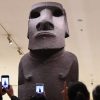ART NEWS
The Big Brother of Bangalore
K.H. Ramaiah, a prominent personality of yesteryear Bangalore, often referred Gubbi Thotadappa as a fatherly figure (appa), Janopakari Doddanna as (Anna), elder brother. The services they rendered encompassed a very large strata of the city irrespective of class, cast and creed.A vivid description of the life and contribution of Doddanna to Bengaluru is found Prof. V Krishna Setty’s book (1997), who had a long association with the institution founded by Doddanna.
Doddanna Shetty was born on February 3, 1840 to a pious couple Nanjundappa and Siddamma. They belonging to a vegetable oil extracting and trading community. They lived in Commercial Street in Cantonment area during 1830s. In addition to being god fearing and spiritual, the couple were also widely known for their charity and hospitality. Nanjundappa was the head of the community and was referred to as ‘Yajaman’.Doddanna, got the education required for the family business, and after the death of his father assumed the post of Yajaman, and continued the family trade. He had also inherited the parents’ trait of charity and hospitality and without any bias, helped the downtrodden to live with dignity.He used to go during night with a few of his associates to distribute good food and blankets to help the destitute and vagabonds on the streets and also the wandering monks who took shelter at Poornaiah Choultry which was located next to Tulasi Thota near Dharmambudi Tank, the present day Kempegowda Central Bus stand.
Paramount Theatre
He renovated the Lakshminarasimha Swamy temple, his family deity, on Old Poor House Road in Cantonment and liberally donated for such work undertaken by other temples in Bengaluru. He had also given away a portion of his land near Bangalore East Railway station for the use of Buddha Centre. Because of these liberal contributions he used to be even referred to as ‘Daanashoora Karna’, a prominent character known for such charitable acts in the epic, Mahabharata. In spite of being benevolent to the society, as if to test his inner strength to face the adversities, he lost three wives, one after the other. Though two sons were born to the fourth wife she too died soon.Yet, he recovered from these onslaughts of the fate and continued to serve his city. During 1898, there was severe plague attack in Bengaluru and the first son Lakshminarayana fell a victim for the pandemic. Realising that isolation is the sole solution to prevent the spread of the disease, Doddanna got about two hundred shelters built in a village Venkatapura for the benefit of the members of his community. The plague had also deprived the education to many downtrodden children. To groom the future generation on proper moral and ethical grounds, he took some space near the present day KR Market in 1900 and started a lower secondary school to impart free education especially for poor children. He treated these kids as his own and took personal care even in giving them oil bath, food and clothing.Pouring a major chunk of his wealth he also started to construct a huge building to run the school. He wanted this structure to represent the culture and ethics of the land and should also be big enough to serve the purpose of a school, choultry, theatre and assembly hall. Later, his building became a landmark in the city as Doddanna hall and also as Paramount theatre.Around the year 1900, the Mysore Government had started the construction of the building of Revenue Survey Office in Cubbon Park, near KR circle. The contractor, Tatayaa had given the responsibility of the construction to Rangappa. Everyday, while walking from Cantonment to his school in the City Market area, Doddanna used to pause a little and observe the construction and used to discussthe details with Rangappa. Finally, when the building was completed, he liked the elegant front elevation of the structure and the excellent quality of work. He wanted his building also to represent the native culture and tradition. He engage d Rangappa to give his dream a realistic shape.
Inspiration for Doddanna Hall
The construction work under his personal supervision was going on. At this juncture, fate shot another major blow by taking away the life of his second and the only surviving son, Lakshminarasimha. Since the son died at the beginning of the construction, some elders advised him not to continue the work as his planetary positions were not in his favour. But, he accepted the adversities as challenges and proceeded with the work.Doddanna’s philanthropic activities and his persisting efforts for the welfare of the downtrodden in spite of stumbling blocks, were known to the elite of the city.Some other elders told him that his walking all the way from Cantonment to the City Market area was strenuous, Doddanna did not agree. “I can afford to have a personal coach for my movement. But, I feel, the money I spend for the same can be used to get few more cups of milk or oil to give bath to the poor little ones in my school…”To continue…sureshmoona@gmail.com











